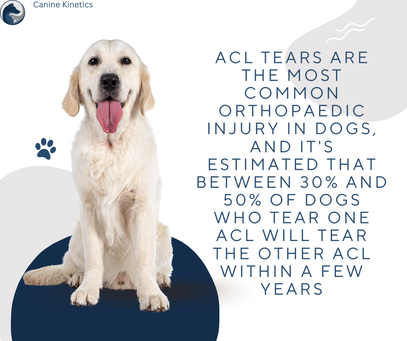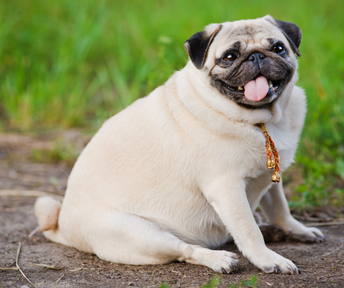|
Canine cruciate disease, also known as cranial cruciate ligament (CCL) disease, is a common orthopaedic condition that affects dogs. The cruciate ligament is a crucial stabilising structure within the stifle (knee) joint, and when it becomes damaged or ruptured, it leads to instability and lameness. The exact cause of canine cruciate disease is not fully understood, but it is believed to be a combination of genetic predisposition and various risk factors. Unlike human ACL's that tend to acutely rupture, a dogs cruciate tends to be more progressive and degenerative in nature Here are some of the main factors that can contribute to the development of canine cruciate disease:
4. Conformation: Certain anatomical features and conformational abnormalities can increase the risk of cruciate disease. Dogs with a steep tibial plateau angle, shallow knee joint, or other structural abnormalities such as 'upright hind limbs' or 'bowed legs' can be more susceptible to CCL disease.
5. Trauma: Acute injury or trauma to the knee joint, such as jumping, landing awkwardly, or sudden twisting motions, can cause cruciate ligament damage. Traumatic events may contribute to the development of cruciate disease in some cases. 6. Hormonal factors: There is some evidence to suggest that female dogs that have not been spayed may have an increased risk of developing cruciate disease. The exact relationship between hormones and ligament health is not fully understood. It's important to note that while these factors can increase the likelihood of developing cruciate disease, it can still occur in dogs without any apparent risk factors. If you happen to suspect that your dog may have CCL disease, please take them to your friendly vet for an accurate diagnosis. |
AuthorJoanna Whitehead Archives
June 2024
Categories
All
|

 RSS Feed
RSS Feed 

